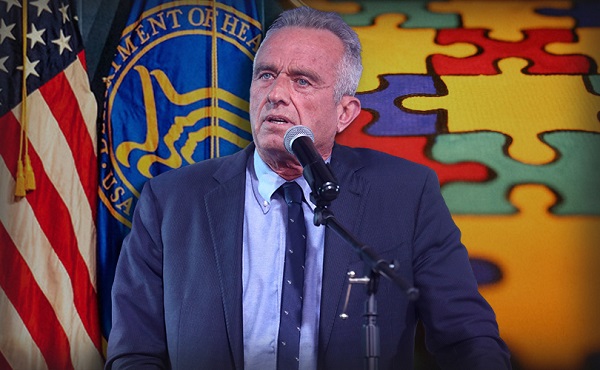Education
“High school has shown us who we are and how we can take forward what we’ve learned and apply it to whatever we encounter in the future.”

Lindsay Thurber Valedictorian credits his time in French Immersion for success
Striving for excellence and continuously pushing himself to be his best version has landed Lindsay Thurber graduate Samuel Bakker the title of Valedictorian for the Class of 2023.
Samuel, who was given the news earlier this month, said it was an extremely exciting moment.
“I knew I was in the running for it, but I wasn’t sure if I had gotten it. I was able to keep myself composed when I was told, but I did a little happy dance after,” he said. “This year, the Valedictorian race was extremely close and all of the students in the running are all exceptional people who deserve this just as much as I do, but it is an honour to represent our class.”
Samuel, who has been in the French Immersion program at Red Deer Public Schools since Kindergarten, said the program has afforded him some great opportunities.
“The main thing that led my parents to register my sister and I in the French Immersion program was because it was something that was a little bit more challenging, and a program we might find a little more engaging,” he said, adding he recognizes it may open more opportunities in his future. “Overtime we learned the value of it, and what I have enjoyed the most is the sense of community we have with the people we’ve gone through the program with. It’s been nice to have a core group of people to go through my schooling with.”
A highlight of high school for Samuel has been the opportunity to be part of the school’s Student Council.
“I’ve loved the work I’ve gotten to do with the Student Council. I run our community division so I’ve gotten to do lots of charitable drives and fundraising,” he said. “We’ve been able to do so many wonderful things with the resources of the school behind us.”
As for plans after high school, Samuel will be heading to the University of British Columbia to pursue a Bachelor of Arts degree. “I’m not sure yet what I will minor or major in, but I would like to do graduate school of some kind,” he said.
As part of his role as Valedictorian, Samuel will address his fellow graduates on May 25 at the Gary W. Harris Canada Games Centre during the school’s graduation ceremonies.
“The overarching theme of my speech is how we’ve been through the journey of high school together and are now heading off on our own adventures,” he said. “High school has shown us who we are and how we can take forward what we’ve learned and apply it to whatever we encounter in the future.”
As the Lindsay Thurber graduation is right around the corner on May 25, Samuel said he is looking most forward to the ceremony.
“I am really looking forward to walking across the stage, getting my diploma and being there with my family.”
Chris Good, Principal at Lindsay Thurber, said being named valedictorian is a testament to the hard work and dedication that Samuel has shown during his time at the school.
“He has earned this distinction through resilience and commitment to his course work. In addition to his academic achievements, Samuel also makes our school a better place to be through his work with student leadership,” he said. “I look forward to hearing his address to our graduating class.”
Class of 2023 gear up for graduation ceremonies
Grade 12 is an exciting and pivotal year for our students, which ends with the ultimate celebration of achievement – graduation! It’s a milestone in a young adult’s life – dressing in the cap and gown, walking across that stage, and celebrating with staff, classmates, family and friends. Our Grade 12 students look forward to their graduation all year and as educators, it gives us such great pride to celebrate this accomplishment together with our students.
Graduation celebrations for each high school will be as follows:
-
Lindsay Thurber Comprehensive High School – Thursday, May 25, 2023
-
Two ceremonies at 9 a.m. and 11:30 a.m. at the Gary W. Harris Canada Games Centre
-
-
Hunting Hills High School – Friday, May 26, 2023
-
Two ceremonies at 10 a.m and 12:30 p.m. at the Gary W. Harris Canada Games Centre
-
-
Pines Alternative School Centre and North Cottage – Friday, June 23, 2023
-
One ceremony at 1 p.m. at Pines Alternative School
-
-
Gateway Christian – Thursday, June 29, 2023
-
One ceremony at 3:30 p.m. at New Life Fellowship Church
-
“We recognize that graduation is an important milestone in a young adult’s life. It’s a milestone that is meaningful for our students and also for their families and friends as well,” said Chad Erickson, Superintendent of Schools. “Graduation is not only a celebration of the hard work and dedication of students, but the start of the next chapter in their lives. We know our students will move on to do great things, and we wish them all the best in their future endeavours.”
“We are very excited that we will be able to celebrate the dedication and achievement of our students at this year’s graduation event,” said Darwin Roscoe, Principal at Hunting Hills High School. “These students have demonstrated the extreme resilience and commitment necessary to reach this milestone. Over the last couple of years, the feedback we heard from our parents and graduates was that they enjoyed the staggered ceremony times, so this year we are doing the same while keeping the great things our students, parents and staff value most in graduation.”
“The thought of reaching graduation in a few short days is incredibly exciting, and simultaneously surreal. For as long as I can remember, high school graduation has been the biggest, most thrilling milestone to reach, making the decision to join the 2023 Graduation Executive Committee a no-brainer,” said Marin Walton, a graduating student from Lindsay Thurber Comprehensive High School. “Through grad exec, we have been able to give back, and provide a memorable senior year for all of the graduates that unfortunately missed out on a majority of the ‘normal’ high school experience. Hopefully, through our various events including multiple spirit days, bowling night, wakefest, and the grad fashion show, we as a committee were able to reinstate the excitement surrounding graduation, despite our unorthodox four years that seem to have passed in the blink of an eye.”
“We are so incredibly proud of our graduates who have persevered, reached this incredible milestone, and are ready to take this new and exciting next step in their lives,” said Stephen Pottage, District Principal – Alternative Programs and Support Services. “Congrats to all of Red Deer’s graduates and their families.”
“What a privilege to see this group of kids successfully reach the milestone of graduation. I am so proud of each of them,” said Karen Wiebe, a parent of a graduating student at Gateway Christian School. “This is made all the more special to me as a Gateway parent because of the rich community developed amongst students, parents and staff in what feels like a small town school. I am truly excited for what is yet to come for this amazing class as they step out into the next chapter of their lives.”
Red Deer Public looks forward to celebrating the achievements of our graduating students over the coming months.
Autism
Autism Rates Reach Unprecedented Highs: 1 in 12 Boys at Age 4 in California, 1 in 31 Nationally

 Popular Rationalism
Popular Rationalism
 James Lyons-Weiler
James Lyons-Weiler
The U.S. Centers for Disease Control and Prevention (CDC) has released its 2025 report from the Autism and Developmental Disabilities Monitoring (ADDM) Network, and the findings are alarming: autism spectrum disorder (ASD) now affects 1 in 31 American 8-year-olds—the highest rate ever recorded.
For boys, the numbers are even more staggering: 1 in 20 nationwide, and 1 in 12.5 in California. The report, which tracks children born in 2014, reveals a crisis growing in severity and complexity, yet broadly unacknowledged in the national discourse.
Autism has become a public health crisis of urgent concern,” the report states plainly. And yet, government agencies have offered no new national action plan, and media coverage remains anemic.
Rapidly Accelerating Trends
In just two years, autism prevalence among 8-year-olds rose 17%, from 1 in 36 to 1 in 31. This is not an anomaly. Since the CDC began tracking autism in children born in 1992, prevalence has increased nearly fivefold, defying theories that attribute the rise solely to broader diagnostic criteria or increased awareness.
The Impact of SB277 on Autism Prevalence in California
In 2015, California enacted Senate Bill 277 (SB277), which went into effect on July 1, 2016. This legislation eliminated the state’s personal belief exemption (PBE) for childhood vaccinations, making it one of only three U.S. states at the time—alongside Mississippi and West Virginia—to require full compliance with the CDC-recommended vaccine schedule for school entry, except in cases of formally approved medical exemption.
While the primary intent of SB277 was to increase vaccination rates and try to reduce outbreaks of communicable diseases like measles, its implementation has coincided with a continued—and arguably accelerated—rise in autism spectrum disorder (ASD) diagnoses in the state. Data drawn from the California Department of Developmental Services (CDDS) and CDC’s Autism and Developmental Disabilities Monitoring (ADDM) Network offer a timeline of prevalence rates before and after the law’s enactment:
Between 2014 and 2017, ASD prevalence among young children in California increased from 0.86% to 1.18%—a 37.2% increase in just three years. By 2020, according to CDC ADDM surveillance, 4.5% of 8-year-olds in California had an autism diagnosis—the highest prevalence among all U.S. monitoring sites.
Percent Increase Post-SB277 (2016 to 2020):
From 1.08% (2016) to 4.5% (2020) = 316.7% increase
This dramatic rise cannot be definitively attributed to SB277 alone, but its temporal proximity to the policy change—which effectively compelled full vaccine schedule compliance across all demographic groups—raises serious questions. Notably, this increase occurred within California’s already robust autism tracking infrastructure (CDDS), known for conservative case identification that focuses on children with moderate to severe impairment requiring lifelong services.
While correlation does not imply causation, the magnitude and timing of California’s autism surge post-SB277 should compel further independent investigation, particularly given that:
- SB277 removed opt-out options for thousands of previously unvaccinated or selectively vaccinated children;
- The increase is most visible in 4-year-old cohorts tracked soon after the law took effect;
- California’s autism rates now exceed 1 in 12 for boys.
In light of these findings, California may now serve not only as a terrible national model for vaccine compliance—but also as a bellwether for unintended consequences of compulsory public health policy.
Alarming Trends in IQ
Contrary to such assumption of ASD leading to giftedness, the ADDM data also show that the proportion of children with higher IQs is actually decreasing, while the share of children with intellectual disability (IQ ≤ 70) has risen. Nearly 2 out of 3 children (64%) diagnosed with autism in this cohort fall below the IQ 85 threshold, indicating moderate to severe impairment.
These are hard realities that many will find unacceptable. Still, nationally, nearly 40% (39.6%) of 8-year-olds with ASD had IQ ≤ 70. Another 24.2% had borderline IQ (71–85). 36.1% had IQ > 85.
Since autism has a motor neuron impairment, demonstrated IQ may be an inexact measure of actual intelligence, as Spellers The Movie has taught the world.
From a clinical viewpoint, the ADDM report’s data quietly demolish the idea that autism incidence increases are driven by mild or high-functioning cases. Since the early 2000s, the proportion of cases with average or high IQ has dropped, while those with intellectual disability have surged. This trend—now reaching nearly 64%—indicates that autism’s rise is not a matter of greater sensitivity in diagnosis. Rather, it appears we are witnessing a real increase in biologically significant, disabling neurodevelopmental injury.
Reversal of Historic Ethnodemographic Trends
The report presents data on racial disparity that now represents a reversal:
Asian/Pacific Islander (3.75%), Black (3.63%), Hispanic (3.58%), and Multiracial (3.27%) 8-year-olds are now more likely to be identified with autism than White children (2.77%)
This is a complete reversal of pre-2018 trends, where White children had the highest identification rates. Children from low-income neighborhoods had higher prevalence of ASD than those from high-income areas in several states, e.g., Utah and Wisconsin
The California Signal: A Harbinger of What’s to Come?
San Diego, California, stands out as a sentinel site—and a warning. According to Supplementary Table 8 of the report, 8.87% of 4-year-old boys in California are diagnosed with autism. Further breakdown shows even more troubling disparities:
- Black boys: ~12%
- Hispanic boys: ~10.5%
- Asian boys: ~9%
- White boys: ~5.3%
These numbers imply that 1 in 8 to 1 in 10 young boys of color in California may carry an autism diagnosis by the time they reach second grade.
Are Environmental Triggers Driving This?
One overlooked possibility is that cumulative exposures—including the full CDC childhood vaccine schedule, lockdown-era developmental disruption, and coexisting toxicants—may act in concert to dysregulate immune and neurological development. California’s 2016 vaccine mandate removed all non-medical exemptions, making full compliance unavoidable for most working families. This timing intersects directly with birth years showing the steepest autism rises. If these policy changes are contributing, even partly, to this epidemiological shift, they demand urgent investigation—not blind defense.
The demographic disparities further reinforce the environmental hypothesis. Among 4-year-olds, autism rates among children of color now exceed those of White children by 40–90%, depending on the group and region.
Public Health Policies Under Scrutiny
Importantly, California’s strict mandate—which bars children from school or daycare without full vaccination—creates a uniquely high-exposure environment for children whose families cannot afford alternatives. These children are also more likely to be Black or Hispanic, compounding the already sharp disparities now seen in ASD prevalence. In San Diego’s 2018 birth cohort, over 1 in 10 Black and Hispanic boys have an autism diagnosis at age four. The notion that this simply reflects “better identification” strains all credibility.
Additionally, pandemic-era lockdowns, prolonged school closures, and extended masking requirements in California may have played a compounding role in disrupting normal developmental pathways for toddlers and young children during formative years.
The Cost of Inaction
The fiscal and societal burden of autism is already astronomical. A 2020 economic model projected U.S. autism-related costs could exceed $5.5 trillion per year by 2060 if trends continue unmitigated. That estimate did not anticipate the rapid acceleration seen in this latest data.
Your tax dollars have funded years of futile autism genetics research that has not led to any prevention, mitation or treatment, and any given individual genes from genome-wide association studies (GWAS) still explain only a sliver of ASD heritability. Meanwhile, evidence continues to build around plausible environmental and iatrogenic mechanisms—oxidative stress, mitochondrial dysfunction, and aluminum adjuvants, among others—without serious investment in confirming or ruling them out. If the CDC were tracking causation with the same rigor it tracks prevalence, we might already have answers.
A Turning Point?
Public health leadership now faces a choice: double down on statistical obfuscation, or finally confront the rising tide of childhood neurological injury. The tools exist—retrospective cohort comparisons, machine learning to detect risk patterns, causal inference modeling of environmental exposures, and most critically, honest, open-ended research. The CDC and NIH must stop chasing only genetic ghosts and start investigating the real, tangible environmental shifts that mirror this crisis in time.
For decades, the CDC, NIH, and IOM have promoted the idea that the rise in autism is primarily diagnostic, while excluding or downplaying environmental and iatrogenic hypotheses. But the current data—showing accelerating prevalence, worsening severity, and growing racial disparities—make this position untenable. It is now clear that narrative closure, not causal closure, has been guiding public messaging. The refusal to explore vaccine adjuvants, prenatal toxic exposures, chronic immune activation, and regulatory policy failures reflects a broken system more committed to preserving public confidence than discovering the truth.
In a striking statement during an April 2025 Cabinet meeting, Secretary of Health and Human Services Robert F. Kennedy Jr. declared,
“By September, we will know what has caused the autism epidemic and we’ll be able to eliminate those exposures.”
The promise represents a historic shift in federal tone—marking the first time in decades that a sitting health official has committed to openly investigating all plausible causes of autism, including environmental and iatrogenic exposures.
Popular Rationalism is a reader-supported publication.
To receive new posts and support my work, consider becoming a free or paid subscriber.
Education
Schools should focus on falling math and reading grades—not environmental activism

From the Fraser Institute
In 2019 Toronto District School Board (TDSB) trustees passed a “climate emergency” resolution and promised to develop a climate action plan. Not only does the TDSB now have an entire department in their central office focused on this goal, but it also publishes an annual climate action report.
Imagine you were to ask a random group of Canadian parents to describe the primary mission of schools. Most parents would say something along the lines of ensuring that all students learn basic academic skills such as reading, writing and mathematics.
Fewer parents are likely to say that schools should focus on reducing their environmental footprints, push students to engage in environmental activism, or lobby for Canada to meet the 2016 Paris Agreement’s emission-reduction targets.
And yet, plenty of school boards across Canada are doing exactly that. For example, the Seven Oaks School Division in Winnipeg is currently conducting a comprehensive audit of its environmental footprint and intends to develop a climate action plan to reduce its footprint. Not only does Seven Oaks have a senior administrator assigned to this responsibility, but each of its 28 schools has a designated climate action leader.
Other school boards have gone even further. In 2019 Toronto District School Board (TDSB) trustees passed a “climate emergency” resolution and promised to develop a climate action plan. Not only does the TDSB now have an entire department in their central office focused on this goal, but it also publishes an annual climate action report. The most recent report is 58 pages long and covers everything from promoting electric school buses to encouraging schools to gain EcoSchools certification.
Not to be outdone, the Vancouver School District (VSD) recently published its Environmental Sustainability Plan, which highlights the many green initiatives in its schools. This plan states that the VSD should be the “greenest, most sustainable school district in North America.”
Some trustees want to go even further. Earlier this year, the British Columbia School Trustees Association released its Climate Action Working Group report that calls on all B.C. school districts to “prioritize climate change mitigation and adopt sustainable, impactful strategies.” It also says that taking climate action must be a “core part” of school board governance in every one of these districts.
Apparently, many trustees and school board administrators think that engaging in climate action is more important than providing students with a solid academic education. This is an unfortunate example of misplaced priorities.
There’s an old saying that when everything is a priority, nothing is a priority. Organizations have finite resources and can only do a limited number of things. When schools focus on carbon footprint audits, climate action plans and EcoSchools certification, they invariably spend less time on the nuts and bolts of academic instruction.
This might be less of a concern if the academic basics were already understood by students. But they aren’t. According to the most recent data from the Programme for International Student Assessment (PISA), the math skills of Ontario students declined by the equivalent of nearly two grade levels over the last 20 years while reading skills went down by about half a grade level. The downward trajectory was even sharper in B.C., with a more than two grade level decline in math skills and a full grade level decline in reading skills.
If any school board wants to declare an emergency, it should declare an academic emergency and then take concrete steps to rectify it. The core mandate of school boards must be the education of their students.
For starters, school boards should promote instructional methods that improve student academic achievement. This includes using phonics to teach reading, requiring all students to memorize basic math facts such as the times table, and encouraging teachers to immerse students in a knowledge-rich learning environment.
School boards should also crack down on student violence and enforce strict behaviour codes. Instead of kicking police officers out of schools for ideological reasons, school boards should establish productive partnerships with the police. No significant learning will take place in a school where students and teachers are unsafe.
Obviously, there’s nothing wrong with school boards ensuring that their buildings are energy efficient or teachers encouraging students to take care of the environment. The problem arises when trustees, administrators and teachers lose sight of their primary mission. In the end, schools should focus on academics, not environmental activism.
-

 2025 Federal Election18 hours ago
2025 Federal Election18 hours agoOttawa Confirms China interfering with 2025 federal election: Beijing Seeks to Block Joe Tay’s Election
-

 Energy1 day ago
Energy1 day agoIndigenous-led Projects Hold Key To Canada’s Energy Future
-

 Energy1 day ago
Energy1 day agoMany Canadians—and many Albertans—live in energy poverty
-

 Business1 day ago
Business1 day agoCanada Urgently Needs A Watchdog For Government Waste
-

 2025 Federal Election18 hours ago
2025 Federal Election18 hours agoHow Canada’s Mainstream Media Lost the Public Trust
-

 2025 Federal Election7 hours ago
2025 Federal Election7 hours agoBREAKING: THE FEDERAL BRIEF THAT SHOULD SINK CARNEY
-

 International1 day ago
International1 day agoPope Francis has died aged 88
-

 2025 Federal Election18 hours ago
2025 Federal Election18 hours agoReal Homes vs. Modular Shoeboxes: The Housing Battle Between Poilievre and Carney













